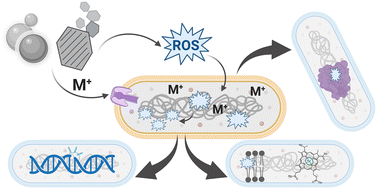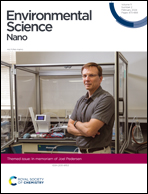Modern materials provoke ancient behavior: bacterial resistance to metal nanomaterials
Abstract
The use of engineered nanomaterials, defined as those smaller than 100 nm, in the health, energy, agricultural, and environmental sectors is expanding rapidly. As such, human and environmental exposure to these materials is increasing every day. For example, metal-based nanomaterials, such as nanosilver, have become ubiquitous in antibacterial applications ranging from socks and baby bottles to healthcare materials, such as oral fillings. Engineered nanomaterials are also used as antibacterial agents and adjuvants to improve antibiotic delivery or efficacy. However, even nanomaterials that were not designed to be antimicrobial can possess potent bactericidal activity. Alarmingly, there are clear connections between nanomaterial exposure, metal resistance, and antibiotic resistance and it is crucial that we dramatically improve our understanding of both the toxicity of these materials and their ability to permanently change the organisms that they encounter. Emerging research indicates that microbes are capable of adapting to nanomaterial toxicity, often with the same generalizable mechanisms used to overcome antibiotic toxicity. In this perspective, we highlight existing knowledge about microbial response to engineered nanomaterials and the key outstanding questions that must be addressed.

- This article is part of the themed collections: Environmental Science: Nano Recent Review Articles and Nano-bio interactions


 Please wait while we load your content...
Please wait while we load your content...